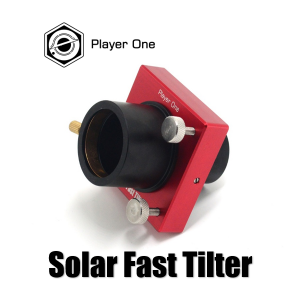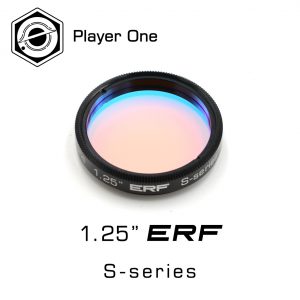Celestron Windguide Anemometer Review
I was cold – frozen-to-my-skinny-old-man-core cold – despite that it was only 42.2° Fahrenheit (5.67° Celsius) out, warmer than many of the days I’d previously pedaled on my national bike tour. I knew it was relatively cold out, because, well, I felt it. I knew precisely how cold, only because the Surly Big’s payload included a Celestron Windguide Anemometer.
Image 1 is the only photo I took that day, because it hurt to remove my gloves. In it, I was holding the Windguide in my wet left hand. My hands were wet because it rained almost an inch in Manhattan that day and both layers of the gloves I wore were soaked.

I’d taken refuge in an overpass tunnel along the Hudson River Greenway on my way to the George Washington Bridge, as much to escape the wind as for a break from the rain. Wind in the tunnel was just 2.3 miles per hour (3.7 km/h) when I capture that image, but outside it varied between 15 and 32 mph (24 and 51.5 km/h) that day, with at least one gust of 39 mph (62.8 km/h), and as with the temperature, I knew the precise wind speeds, because as its name suggests, the Windguide also functions as an anemometer.
For what it’s worth, the wind that day was predominantly out of the east-northeast, and I was pedaling predominantly to the northwest. Gusting side winds are worse for folks on overloaded bikes than headwinds, especially when from the left (in countries that drive on the righthand side of the road), because they threaten to blow us into automobile traffic.
Did I need a digital thermometer to know that April 6 felt the most miserably cold of my long bicycle journey? Did I require an anemometer to know that the wind was strong and felt brutal through layers of soaked clothing? No, both were painfully self-evident. But, without the data reported by the little device, my recollections of that day would contain far less interesting detail.
Oh, and in case you’re wondering, the coldest temperature the Celestron Windguide Anemometer has reported during my continuing journey was 24° F (-4.4° C) in the Carolinas, and the highest was 105° F (40.56° C) in the Texas panhandle. There was little wind either day. The highest wind speeds the device has recorded – 57 mph (91.7 km/h) – occurred during a late-night thunderstorm in northeast New Mexico.
The Windguide provides the two weather data points I want most: temperature and wind speed. It does not report humidity, but I did not need a hygrometer to conclude that the relative humidity during my 46-mile ride from New York City to Mahwah, New Jersey on April 6 ranged between 90 and 100 percent.
The device reports current, maximum and average wind speed in miles per hour, kilometers per hour, meters per second, feet per minute and Knots. Current temperature is reported in degrees Fahrenheit or Celsius.
It also indicates wind-chill, but only when the temperature falls below 32° F or 0° C. Given the temperature and wind-speed data points, I can make that calculation easily enough: During my April 6 ride, wind-chill ranged from 27° F (-2.7° C) to 34.7° F (1.5° C). Of course, neither calculation factors that the fellow feeling those wind-chill factors was soaked to the skin.
The Windguide’s display features a backlight, which is bluish in hue. I’d prefer a red backlight, but blue is better than no backlight at all when in a dark tunnel. When I want to protect my dark-adapted vision, I illuminate the display with the tiny red flash the Big also carries.
The display reports the Beaufort zero-to-12 wind-force scale, for those of you who think in nautical terms, plus wind speed, wind-speed units, wind-chill, temperature, units of temperature, average wind speed, maximum wind speed and remaining battery power.
Wind speed is detected by a 1.0-inch (25.4-mm) impeller located at the top of the device. I’ve had nothing against which to calibrate it other than National Weather Bureau data, but against that standard, it appears to operate within the five-percent, plus or minus, accuracy range claimed by Celestron. Ditto the temperature accuracy, which Celestron reports as plus or minus 3.6° F and 2.0° C.

The device is powered by a single, common CR2032 button battery, generally available wherever batteries are sold. Access to the battery is via a twist-off/on cover. I’ve been getting six to eight months of regular operation from each battery. To conserve the battery, the unit turns off automatically when not in use for 14 minutes, or so.
The Celestron Windguide Anemometer unit is enclosed in a durable black-plastic case that is in turn protected by as soft-plastic cover (Image 2). It is available with either a black or yellow cover. Because I like to improve my odds of finding such things, I opted for the yellow cover. I’ve pedaled more than 10,000 miles since I began the long journey, and the Windguide has ridden along on most of those bouncy rides yet still looks and functions like new.
But why would you need one? Well, beyond wanting to satisfy your natural curiosity about just how cold or warm it is or how hard the wind is blowing, I can think of at least one critical use case. Assume you’re imaging in the field, and at some point, the wind begins to buffet your scope and mount so that long exposures are no longer possible.
But at what point? If you packed a Celestron Windguide Anemometer, you could define that precise wind-speed point and would thus know not to bother when the forecast calls for wind speeds that exceed that point. Plus, you’d know ambient temperatures against which to compare temperatures of your scope’s optics for anticipation of tube currents, dew points and such.
Pedaling astronomers will appreciate the device’s small size – 4.25 inches long by 1.6875 inches wide by 0.75 thick (107.9 x 42.9 x 19 mm) – and negligible weight, as will more-rational astronomers. Retail priced well under $50US, I consider it a sound investment for all astronomers, pedaling or sane.
 Astronomy Technology Today Executive Editor Gary Parkerson discovered early in his amateur-astronomy career that he was as fascinated by the tools of astronomy as by the amazing celestial objects they reveal – perhaps more so. When not writing about astro-tech, he covers industrial technology for a variety of online resources.
Astronomy Technology Today Executive Editor Gary Parkerson discovered early in his amateur-astronomy career that he was as fascinated by the tools of astronomy as by the amazing celestial objects they reveal – perhaps more so. When not writing about astro-tech, he covers industrial technology for a variety of online resources.
And to make it easier for you to get the most extensive telescope and amateur astronomy related news, articles and reviews that are only available in the magazine pages of Astronomy Technology Today, we are offering a 1 year subscription for only $6! Or, for an even better deal, we are offering 2 years for only $9. Click here to get these deals which only will be available for a very limited time. You can also check out a free sample issue here.



